Are your Google Ads campaigns falling flat? You’re not alone. Many businesses struggle to turn clicks into conversions, watching their ad spend drain away with little to show for it. But what if you could dramatically boost your conversion rate overnight?
The secret lies in understanding the nuances of Google Ads and implementing proven strategies that can transform your campaigns. From refining your goals to leveraging cutting-edge features, there’s a world of untapped potential waiting to be unleashed. In this post, we’ll dive into 20 actionable tactics that can skyrocket your conversion rate, helping you maximize your ROI and achieve unprecedented success in your advertising efforts.
Ready to turn your Google Ads campaigns from money pits into profit engines? Let’s explore how you can refine your campaign goals, use targeted keywords, optimize landing pages, and much more. By the end of this guide, you’ll have a toolkit of strategies to implement immediately, potentially seeing results as soon as tomorrow.
Table of Contents
What Is a Conversion Rate in Google Ads?
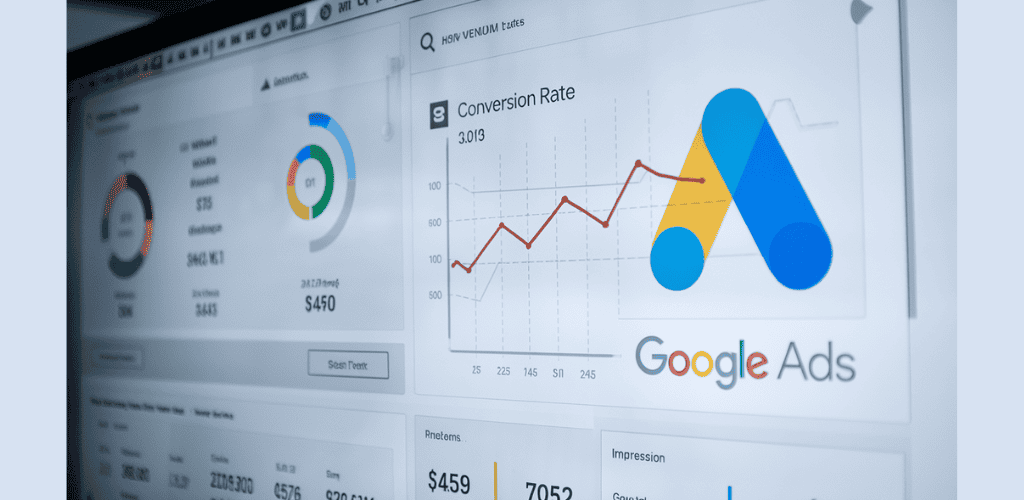
What Is a Conversion Rate in Google Ads?
Conversion rate in Google Ads is a crucial metric that measures the effectiveness of your advertising campaigns. It represents the percentage of users who complete a desired action after clicking on your ad. These actions, known as conversions, can vary depending on your business goals and may include:
- Making a purchase
- Signing up for a newsletter
- Downloading a whitepaper
- Filling out a contact form
- Calling your business
Understanding and optimizing your conversion rate is essential for maximizing the return on investment (ROI) of your Google Ads campaigns.
The formula for Conversion Rate:
The conversion rate is calculated using a simple formula:
Conversion Rate = (Number of Conversions / Number of Ad Clicks) × 100
For example:
| Ad Clicks | Conversions | Conversion Rate |
|---|---|---|
| 1000 | 50 | 5% |
| 500 | 25 | 5% |
| 2000 | 160 | 8% |
A higher conversion rate indicates that your ads and landing pages are effectively persuading users to take the desired action. To improve your conversion rate, consider:
- Refining your ad targeting
- Improving ad copy and design
- Optimizing landing pages
- Testing different call-to-action (CTA) buttons
- Streamlining the conversion process
By focusing on these aspects, you can enhance your Google Ads performance and achieve better results for your advertising budget.
Refine Your Campaign Goals

Define Clear Objectives
To refine your campaign goals effectively, start by defining clear objectives. This step is crucial for improving your Google Ads conversion rate. Consider the following table to help you set SMART goals:
| Goal Component | Description | Example |
|---|---|---|
| Specific | Clearly define what you want to achieve | Increase sales of product X |
| Measurable | Set quantifiable targets | Boost conversions by 20% |
| Achievable | Ensure goals are realistic | Improve CTR from 2% to 3% |
| Relevant | Align with overall business objectives | Generate 50 qualified leads |
| Time-bound | Set a deadline for achieving the goal | Within the next 30 days |
Align Goals with Business Objectives
Once you’ve defined clear objectives, ensure they align with your overall business goals. This alignment helps in:
- Focusing resources on high-impact areas
- Justifying ad spend to stakeholders
- Measuring campaign success more accurately
Set Realistic Benchmarks
To refine your campaign goals effectively:
- Analyze historical data
- Research industry standards
- Consider seasonal trends
- Factor in budget constraints
- Assess competition levels
By setting realistic benchmarks, you can create achievable targets that motivate your team and drive meaningful results. Remember, well-defined goals are the foundation of a successful Google Ads campaign and can significantly impact your conversion rate overnight.
Use Targeted Keywords

Understanding Keyword Intent
When using targeted keywords in Google Ads, it’s crucial to understand the intent behind each search query. Different types of keywords indicate various stages in the buyer’s journey:
- Informational keywords: Users seeking information
- Navigational keywords: Users looking for a specific website
- Commercial keywords: Users comparing products or services
- Transactional keywords: Users ready to make a purchase
| Keyword Type | Example | User Intent |
|---|---|---|
| Informational | “How to improve conversion rate” | Research |
| Navigational | “Google Ads login” | Find specific site |
| Commercial | “Best PPC management tools” | Compare options |
| Transactional | “Buy Google Ads course” | Make a purchase |
Long-Tail Keywords for Better Targeting
Long-tail keywords are more specific phrases that typically have lower search volume but higher conversion potential. They allow you to:
- Target more qualified leads
- Reduce competition
- Lower cost-per-click (CPC)
- Improve ad relevance and quality score
Negative Keywords to Refine Targeting
Implementing negative keywords helps exclude irrelevant traffic and improve your ad targeting:
- Identify irrelevant search terms from your search term report
- Add these as negative keywords at the campaign or ad group level
- Regularly review and update your negative keyword list
By focusing on targeted keywords, you’ll improve the relevance of your ads to potential customers, leading to higher click-through rates and, ultimately, better conversion rates. Next, we’ll explore how leveraging ad extensions can further enhance your Google Ads performance.
Leverage Ad Extensions

Leverage Ad Extensions
Ad extensions are powerful tools that can significantly enhance your Google Ads performance and boost conversion rates. By providing additional information and options to potential customers, you can increase the visibility and appeal of your ads.
Types of Ad Extensions
Here’s a table showcasing some popular ad extensions and their benefits:
| Ad Extension Type | Description | Benefit |
|---|---|---|
| Sitelink Extensions | Additional links to specific pages | Directs users to relevant content |
| Call Extensions | Click-to-call button | Facilitates immediate contact |
| Location Extensions | Business address and map | Improves local visibility |
| Callout Extensions | Short phrases highlighting unique selling points | Emphasizes key features |
| Structured Snippet Extensions | Lists of products or services | Showcases variety |
Best Practices for Ad Extensions
To maximize the impact of ad extensions:
- Use relevant extensions for each campaign
- Keep information up-to-date and accurate
- Test different combinations of extensions
- Monitor performance and adjust accordingly
- Ensure landing pages match extension content
By strategically implementing ad extensions, you can provide users with more reasons to click on your ads and take action. This increased engagement often leads to higher click-through rates and, ultimately, improved conversion rates.
Now that we’ve covered how to leverage ad extensions effectively, let’s move on to optimizing your landing pages to further enhance your conversion potential.
Optimize Landing Pages
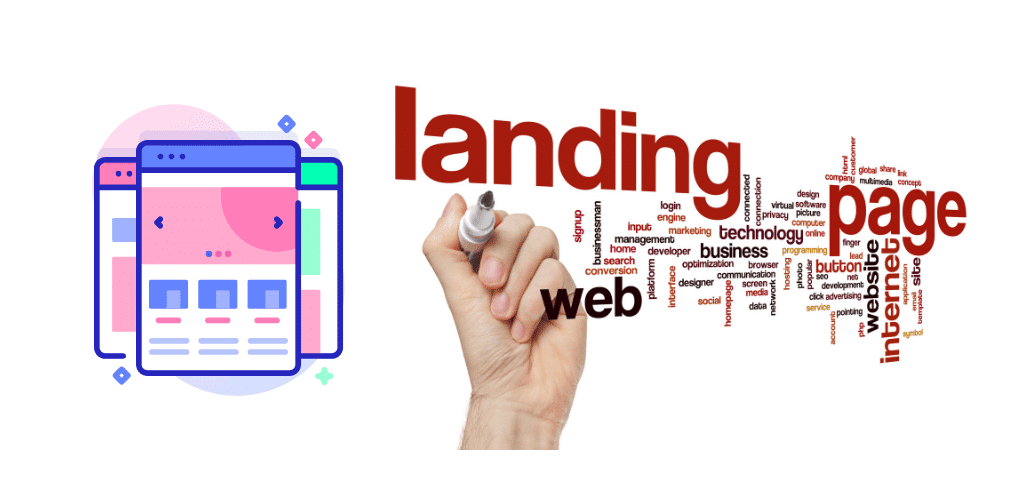
Optimize Landing Pages
When it comes to improving your Google Ads conversion rate, optimizing your landing pages is crucial. A well-designed landing page can significantly impact your ad performance and ultimately lead to higher conversions.
Key Elements of an Optimized Landing Page
- Clear and Compelling Headlines
- Relevant and Persuasive Content
- Strong Call-to-Action (CTA)
- Fast Loading Speed
- Mobile Responsiveness
Best Practices for Landing Page Optimization
- Align with Ad Copy: Ensure your landing page content matches the promise in your ad to maintain consistency and meet user expectations.
- Use A/B Testing: Experiment with different layouts, headlines, and CTAs to identify the most effective elements.
- Implement Trust Signals: Include customer testimonials, security badges, and guarantees to build credibility.
- Optimize Page Speed: Compress images, minimize code, and leverage browser caching to improve loading times.
Here’s a comparison of optimized vs. non-optimized landing pages:
| Feature | Optimized Landing Page | Non-Optimized Landing Page |
|---|---|---|
| Load Time | Under 3 seconds | Over 5 seconds |
| Mobile-Friendly | Yes | No |
| Clear CTA | Prominent and action-oriented | Vague or hidden |
| Relevant Content | Matches ad copy | Generic or unrelated |
| Trust Elements | Present | Absent |
By focusing on these optimization techniques, you can create landing pages that not only attract clicks but also convert visitors into customers. Remember, a well-optimized landing page is the bridge between a user’s intent and your desired action, making it a critical component in improving your Google Ads conversion rate.
Test Different Ad Copy
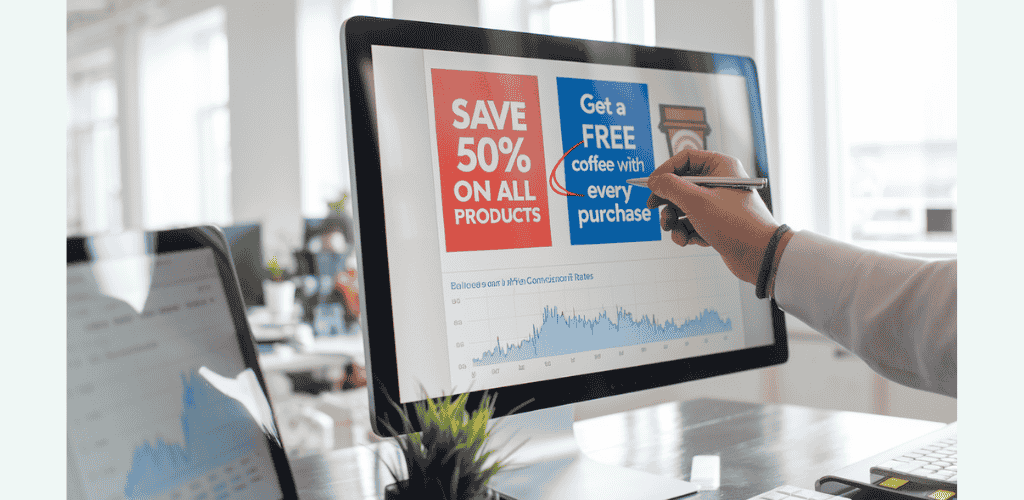
Testing Ad Copy Variations
To improve your Google Ads conversion rate overnight, it’s crucial to test different ad copy variations. By experimenting with various elements of your ad text, you can identify what resonates best with your target audience and drives more conversions.
Key Elements to Test
Here are some essential components of your ad copy to test:
- Headlines
- Descriptions
- Call-to-Action (CTA)
- Value propositions
- Emotional triggers
A/B Testing Strategy
Implement an effective A/B testing strategy to compare different ad copy variations:
- Create two or more versions of your ad
- Run them simultaneously
- Analyze performance metrics
- Identify the winning variation
- Iterate and refine
| Metric | Ad Variation A | Ad Variation B |
|---|---|---|
| CTR | 2.5% | 3.2% |
| CVR | 4.8% | 5.6% |
| CPA | $25.50 | $22.80 |
Best Practices for Ad Copy Testing
- Test one element at a time for accurate results
- Run tests for at least 7-14 days
- Ensure statistical significance before drawing conclusions
- Continuously iterate and improve based on insights
By systematically testing different ad copy variations, you can uncover the most effective messaging that drives higher click-through rates and conversions. This data-driven approach allows you to optimize your ads continuously, leading to improved performance and better ROI for your Google Ads campaigns.
Use Remarketing Campaigns
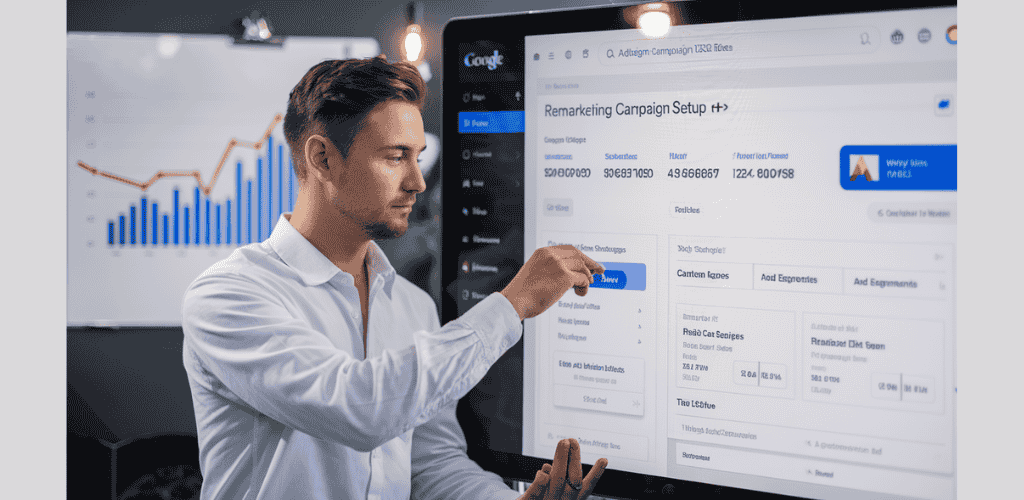
Use Remarketing Campaigns
Remarketing campaigns are a powerful tool to boost your Google Ads conversion rate overnight. By targeting users who have previously interacted with your website or app, you can significantly increase the likelihood of conversion.
Benefits of Remarketing Campaigns
- Higher conversion rates
- Improved brand recall
- Cost-effective advertising
- Personalized messaging
Implementing Effective Remarketing Strategies
- Segment your audience: Create specific lists based on user behavior
- Customize ad creatives: Tailor your ads to each segment
- Set frequency caps: Avoid ad fatigue by limiting impressions
- Use dynamic remarketing: Show specific products users have viewed
Remarketing Campaign Types
| Campaign Type | Description | Best For |
|---|---|---|
| Standard Remarketing | Shows ads to past visitors | General brand awareness |
| Dynamic Remarketing | Displays specific products viewed | E-commerce sites |
| Video Remarketing | Targets users who interacted with your videos | YouTube advertisers |
| Customer List Remarketing | Targets known customers | B2B businesses |
By leveraging remarketing campaigns, you can re-engage potential customers who are already familiar with your brand, increasing the likelihood of conversion. Remember to continuously test and refine your remarketing strategies for optimal results. In the next section, we’ll explore how implementing conversion tracking can further enhance your Google Ads performance.
Implement Conversion Tracking

Implement Conversion Tracking
Implementing conversion tracking is crucial for improving your Google Ads performance. This powerful tool allows you to measure the effectiveness of your campaigns and make data-driven decisions.
Setting Up Conversion Tracking
To set up conversion tracking:
- Sign in to your Google Ads account
- Click on “Tools & Settings” in the upper right corner
- Select “Conversions” under “Measurement”
- Click the “+” button to add a new conversion action
- Choose the type of conversion you want to track
Types of Conversions to Track
| Conversion Type | Description | Best For |
|---|---|---|
| Website | Actions on your site | E-commerce, lead generation |
| App | In-app actions | Mobile app promotions |
| Phone calls | Calls from ads | Service-based businesses |
| Import | Offline conversions | Businesses with offline sales |
Benefits of Conversion Tracking
- Understand which ads, keywords, and campaigns are most effective
- Optimize your bids based on real performance data
- Identify opportunities for improvement in your sales funnel
- Make informed decisions about budget allocation
By implementing conversion tracking, you’ll gain valuable insights into your customer’s journey, allowing you to refine your strategies and boost your conversion rates effectively. Next, we’ll explore how to focus on device performance to further enhance your Google Ads results.
Focus on Device Performance

Mobile vs. Desktop Performance
In the world of Google Ads, understanding device performance is crucial for optimizing your conversion rates. Let’s compare the performance of mobile and desktop devices:
| Aspect | Mobile | Desktop |
|---|---|---|
| Screen Size | Smaller, limited space | Larger, more content visible |
| User Intent | Often on-the-go, quick searches | More in-depth research |
| Loading Speed | Critical (3 seconds or less) | Important, but more forgiving |
| Ad Formats | Mobile-specific (e.g., call-only ads) | More varied options |
| Conversion Path | Usually shorter | Can be longer and more complex |
Optimizing for Different Devices
To improve your conversion rate across devices:
- Use responsive ad designs
- Create device-specific landing pages
- Adjust bid modifiers for better-performing devices
- Implement click-to-call buttons for mobile users
- Ensure fast loading times, especially on mobile
Analyzing Device-Specific Metrics
Pay close attention to these metrics for each device type:
- Click-through rate (CTR)
- Conversion rate
- Cost per conversion
- Average session duration
- Bounce rate
By understanding these metrics, you can make data-driven decisions to allocate your budget more effectively and tailor your ad strategies to each device’s strengths.
Now that we’ve explored device performance, let’s move on to another powerful tactic for boosting conversions: adding countdown timers to create urgency in your ads.
Add Countdown Timers
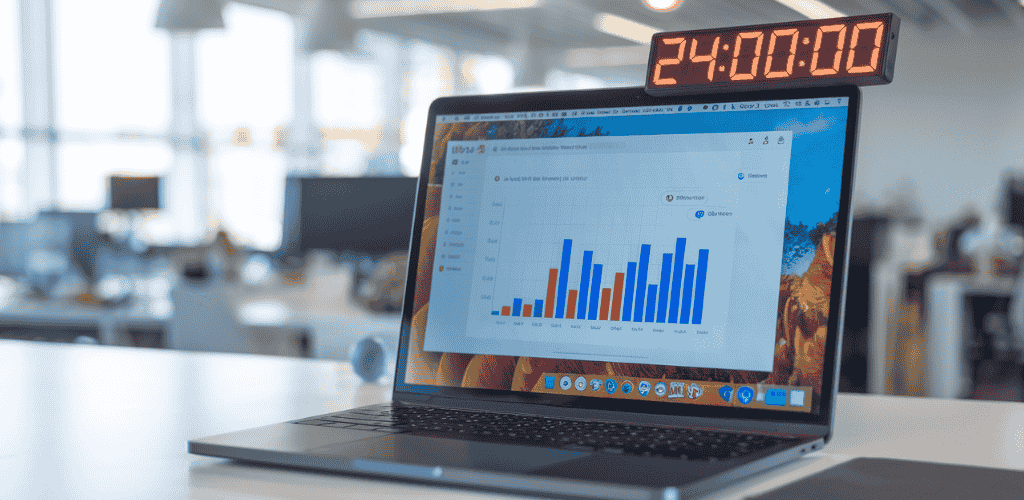
Add Countdown Timers
Incorporating countdown timers in your Google Ads can significantly boost your conversion rates by creating a sense of urgency and scarcity. Here’s how to effectively use them:
Types of Countdown Timers
- Fixed Date Timers
- Dynamic Timers
- Evergreen Timers
| Timer Type | Description | Best Use Case |
|---|---|---|
| Fixed Date | Counts down to a specific date | Sales events, product launches |
| Dynamic | Starts when user sees the ad | Limited-time offers |
| Evergreen | Resets for each user | Ongoing promotions |
Implementing Countdown Timers
To add a countdown timer to your Google Ads:
- Use the {=} function in your ad copy
- Set the language and time zone
- Specify the end date and time
- Choose between days, hours, or minutes
Example: “Sale ends in {=countdown(“2023-12-31 23:59:59″,”en-US”,1)}”
Best Practices
- Test different timer durations
- Align timers with landing page content
- Use clear and compelling call-to-actions
- Avoid overuse to maintain credibility
By effectively using countdown timers, you can create a powerful sense of FOMO (Fear of Missing Out) that motivates users to take immediate action, thereby improving your Google Ads conversion rates overnight.
Experiment With Smart Bidding Strategies

Experiment With Smart Bidding Strategies
Google Ads offers several smart bidding strategies that leverage machine learning to optimize your bids for conversions. These strategies can significantly improve your conversion rate overnight by automating the bidding process based on your campaign goals.
Popular Smart Bidding Strategies
| Strategy | Goal | Best For |
|---|---|---|
| Target CPA | Maximize conversions at target cost per acquisition | Advertisers with specific CPA goals |
| Target ROAS | Maximize conversion value at target return on ad spend | E-commerce businesses |
| Maximize Conversions | Get the most conversions within budget | Campaigns with no specific CPA target |
| Enhanced CPC | Adjust manual bids to maximize conversions | Those transitioning from manual bidding |
Implementing Smart Bidding
- Choose the right strategy based on your campaign objectives
- Set realistic targets (CPA or ROAS) based on historical data
- Allow sufficient learning time (1-2 weeks) for the algorithm to optimize
- Monitor performance closely and adjust targets as needed
Smart bidding can dramatically improve your conversion rates by placing the right bid for each auction in real-time. However, it’s crucial to provide the algorithm with accurate conversion tracking data and allow it time to learn and optimize. As you experiment with different strategies, keep a close eye on your campaign performance and be prepared to make adjustments to achieve the best results.
Now that we’ve explored smart bidding strategies, let’s look at how tightening your ad group themes can further boost your conversion rates.
Tighten Ad Group Themes
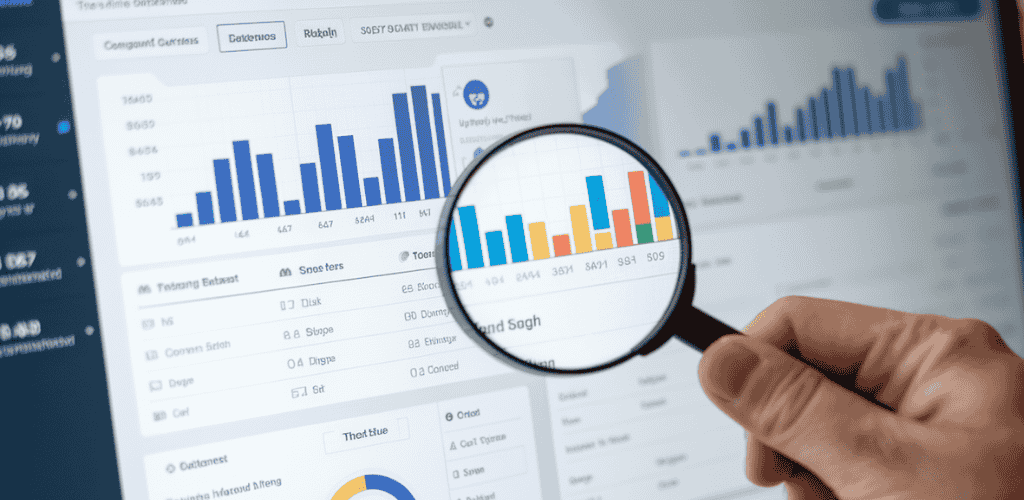
Tighten Ad Group Themes
Tightening your ad group themes is a crucial step in improving your Google Ads conversion rate. By creating more focused and relevant ad groups, you can enhance the alignment between your keywords, ads, and landing pages, leading to better performance and higher quality scores.
Benefits of Tight Ad Group Themes
- Improved relevance
- Higher click-through rates (CTR)
- Better quality scores
- Increased ad rank
- Lower cost-per-click (CPC)
How to Tighten Ad Group Themes
- Group similar keywords: Organize keywords with similar intent into tightly-themed ad groups.
- Limit keywords per ad group: Aim for 10-20 closely related keywords per ad group.
- Create specific ad copy: Tailor your ad text to match the keywords in each ad group.
- Use dynamic keyword insertion: Automatically insert the user’s search term into your ad copy.
- Align landing pages: Ensure each ad group links to a highly relevant landing page.
Comparison: Broad vs. Tight Ad Groups
| Aspect | Broad Ad Groups | Tight Ad Groups |
|---|---|---|
| Keyword relevance | Low to moderate | High |
| Ad copy specificity | Generic | Highly targeted |
| Quality Score potential | Lower | Higher |
| Management complexity | Simpler | More detailed |
| Performance | Variable | Consistently better |
By implementing tighter ad group themes, you’ll create a more cohesive and effective campaign structure. This approach allows for more precise targeting and messaging, ultimately leading to improved conversion rates and better overall performance in your Google Ads campaigns. As you refine your ad groups, you’ll be better positioned to take advantage of other optimization strategies and further enhance your campaign’s success.
Take Advantage of Geo-Targeting

Understanding Geo-Targeting
Geo-targeting is a powerful tool in Google Ads that allows you to focus your advertising efforts on specific geographic locations. By tailoring your ads to particular regions, cities, or even neighborhoods, you can significantly improve your conversion rates overnight.
Benefits of Geo-Targeting
- Increased relevance to local audiences
- Better budget allocation
- Higher click-through rates
- Improved conversion rates
Implementing Geo-Targeting Strategies
- Radius targeting: Set a specific radius around your business location
- Location-specific ad copy: Customize ad text for different regions
- Bid adjustments: Increase or decrease bids based on location performance
- Exclusion targeting: Exclude areas where your products or services aren’t available
Best Practices for Geo-Targeting
| Practice | Description |
|---|---|
| Research | Analyze location data to identify high-performing areas |
| Test | Experiment with different location settings and compare results |
| Refine | Continuously adjust your targeting based on performance metrics |
| Localize | Adapt your messaging to resonate with local audiences |
By implementing these geo-targeting strategies, you can quickly optimize your Google Ads campaigns for better performance and higher conversion rates. Remember to regularly review and adjust your targeting settings to ensure maximum efficiency and ROI.
Incorporate Social Proof
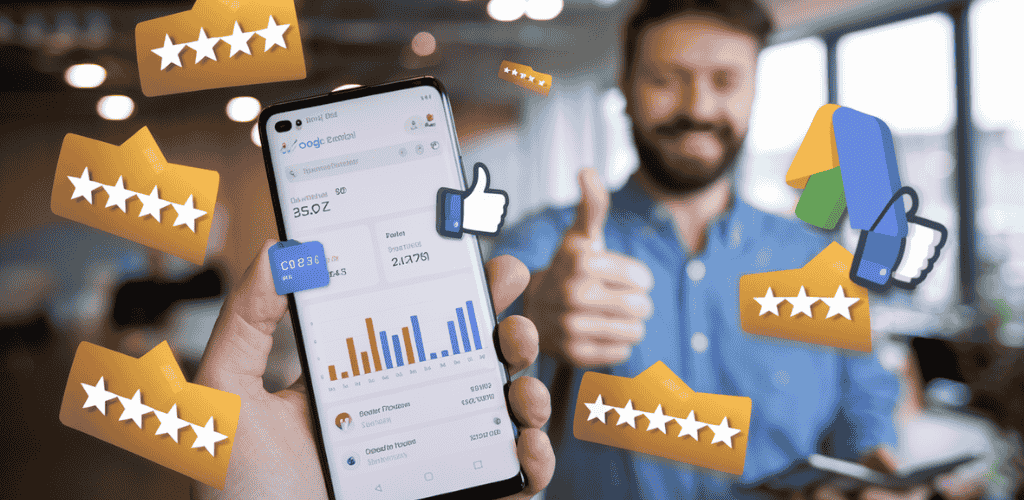
Incorporate Social Proof
Social proof is a powerful psychological phenomenon that can significantly boost your Google Ads conversion rates. By showcasing positive experiences from other customers, you can build trust and credibility with potential buyers.
Types of Social Proof
Here are some effective forms of social proof you can incorporate into your Google Ads campaigns:
- Customer testimonials
- User reviews
- Trust badges
- Celebrity endorsements
- Social media follower counts
Implementing Social Proof in Google Ads
To leverage social proof effectively, consider the following strategies:
- Ad Extensions: Use review extensions to display star ratings and customer reviews directly in your ads.
- Landing Pages: Feature testimonials and case studies prominently on your landing pages.
- Ad Copy: Incorporate statistics or numbers that demonstrate your product’s popularity or effectiveness.
| Social Proof Element | Implementation in Google Ads |
|---|---|
| Customer Reviews | Review extensions |
| Trust Badges | Image extensions |
| Testimonials | Callout extensions |
| Social Media Counts | Ad copy or sitelink extensions |
By incorporating social proof into your Google Ads campaigns, you can create a sense of trust and urgency that encourages potential customers to take action. Remember to update your social proof regularly to keep it fresh and relevant. With these strategies in place, you’ll be well on your way to improving your conversion rates overnight.
Monitor Quality Scores

Understanding Quality Scores
Quality Score is a crucial metric in Google Ads that impacts your ad performance and cost-per-click. It’s rated on a scale of 1-10, with 10 being the highest. A higher Quality Score can lead to better ad positions and lower costs.
Factors Affecting Quality Score
Google considers several factors when determining your Quality Score:
- Expected clickthrough rate (CTR)
- Ad relevance
- Landing page experience
| Factor | Impact on Quality Score |
|---|---|
| High CTR | Positive |
| Relevant Ad Copy | Positive |
| Fast Loading Landing Page | Positive |
| Poor Keyword Relevance | Negative |
Improving Your Quality Score
To boost your Quality Score:
- Refine your keyword list to ensure relevance
- Write compelling ad copy that matches user intent
- Optimize your landing pages for speed and relevance
- Use ad extensions to provide more information
- Regularly review and update your ad groups
Monitoring and Analyzing
Consistently monitor your Quality Scores across all keywords and ad groups. Use Google Ads’ built-in tools to track changes over time and identify areas for improvement. By focusing on enhancing your Quality Score, you can significantly improve your ad performance and reduce costs, ultimately leading to better conversion rates.
Utilize Ad Assets
Utilize Ad Assets
Ad assets, formerly known as ad extensions, are powerful tools that can significantly boost your Google Ads performance. By incorporating various ad assets, you can provide more information to potential customers and increase the visibility of your ads.
Types of Ad Assets
Here’s a table showcasing different types of ad assets and their benefits:
| Ad Asset Type | Description | Benefit |
|---|---|---|
| Sitelink Extensions | Additional links to specific pages | Directs users to relevant content |
| Callout Extensions | Short, descriptive text phrases | Highlights key selling points |
| Structured Snippets | Lists of products or services | Showcases variety of offerings |
| Call Extensions | Phone number for direct contact | Encourages immediate communication |
| Location Extensions | Business address and map | Helps local customers find you |
Best Practices for Ad Assets
To maximize the impact of your ad assets:
- Use all relevant asset types for your business
- Create unique and compelling copy for each asset
- Ensure landing pages match the asset content
- Regularly update and test different asset combinations
- Monitor performance and adjust accordingly
By effectively utilizing ad assets, you can provide more value to potential customers, improve ad relevance, and ultimately increase your conversion rates. Remember to align your ad assets with your overall campaign goals and target audience preferences for the best results.
Some Additional Tips

Audience Segmentation
Effective audience segmentation is crucial for improving your Google Ads conversion rate. By dividing your target audience into specific groups based on demographics, interests, or behavior, you can create more tailored and relevant ads. This approach allows you to:
- Customize ad messaging for each segment
- Allocate budget more efficiently
- Improve overall campaign performance
Here’s a table illustrating common audience segmentation criteria:
| Criteria | Examples |
|---|---|
| Demographics | Age, gender, income, education |
| Interests | Hobbies, lifestyle choices |
| Behavior | Past purchases, website interactions |
| Geography | Location, language |
Schedule Your Ads Based on Performance
Timing is everything in Google Ads. Analyze your campaign data to identify when your ads perform best and schedule them accordingly. Consider:
- Day-parting: Showing ads only during specific hours
- Day of the week targeting: Focusing on high-performing days
- Seasonal adjustments: Adapting to yearly trends
Offer Incentives
Entice potential customers with compelling offers to boost your conversion rate. Some effective incentives include:
- Limited-time discounts
- Free shipping
- Bundle deals
- Exclusive access to new products
- Money-back guarantees
Remember to highlight these incentives in your ad copy and landing pages to maximize their impact on your conversion rate.
Now that we’ve covered these additional tips, let’s wrap up with some final thoughts on improving your Google Ads conversion rate.
Improving your Google Ads conversion rate doesn’t have to be a long, drawn-out process. By implementing the strategies discussed in this post, you can see significant improvements in a short time frame. From refining your campaign goals and using targeted keywords to optimizing landing pages and leveraging ad extensions, each tactic plays a crucial role in boosting your conversions.
Remember, the key to success lies in continuous testing and optimization. Experiment with different ad copies, implement remarketing campaigns, and take advantage of geo-targeting to reach your ideal audience. Don’t forget to monitor your quality scores and utilize ad assets to make your ads more engaging. By combining these techniques and staying vigilant with your campaign management, you’ll be well on your way to achieving higher conversion rates and maximizing your return on investment in Google Ads.




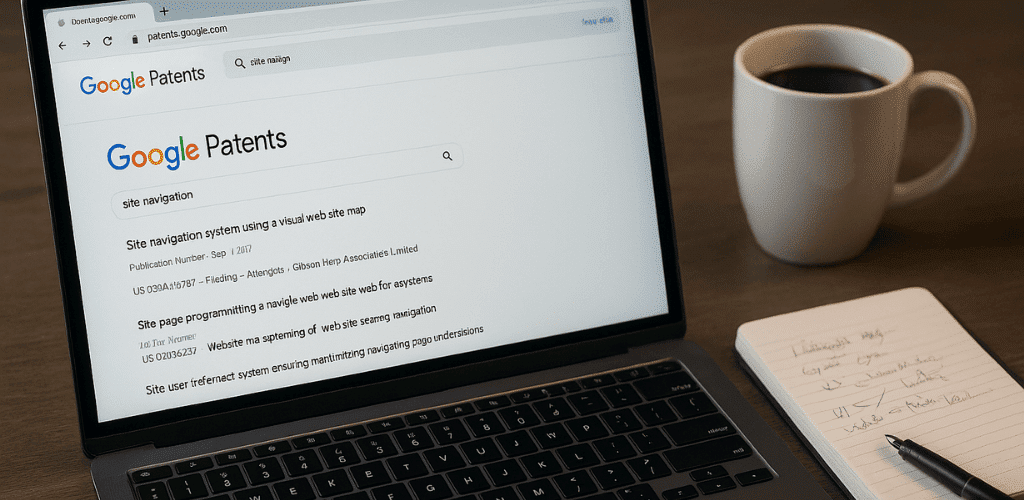

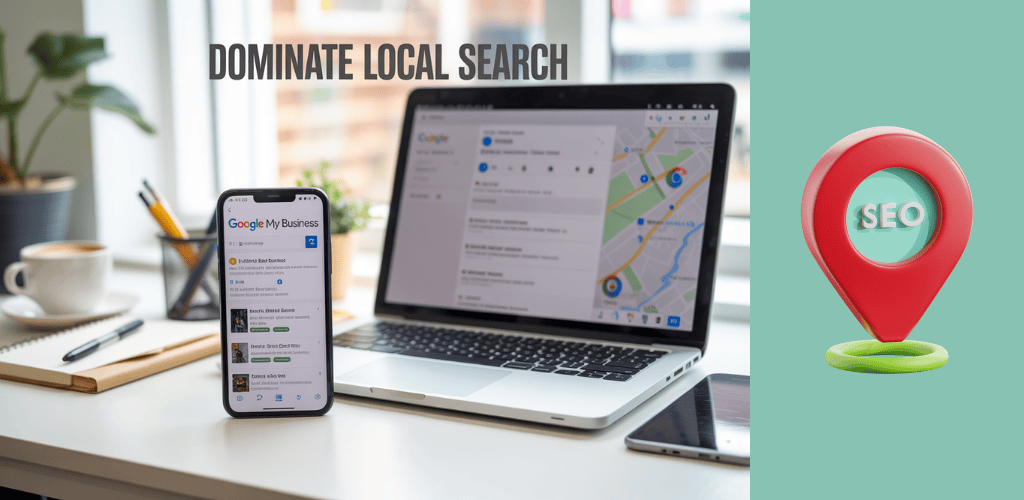

[…] Remarketing allows advertisers to re-engage visitors who previously showed interest in their products or services. Dynamic remarketing automates ad creation for multiple products, increasing the chances of conversion. […]